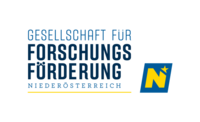Supporting users in understanding visual representations
Background
Over the last decades, the amounts and complexity of available data have grown tremendously. Visualisation turns data into meaningful visual representations that can be effectively processed by the human visual perceptual system. However, most users are not experts in visual data analysis and have difficulties understanding the representation and making sense of the underlying data, especially when analysing large and complex amounts of data. While the goal of visualisation is to create clarity, a certain level of visualisation literacy is always required to successfully explore and interpret the data. Onboarding concepts can help users comprehend the mapping process and increase their level of visualisation literacy.
Visualisation literacy
Visualisation literacy refers to the ability to extract information and gain insights from data visualisations in an effective, efficient and confident way. Users must learn how to interpret the visually encoded information. Most users of such tools are not experienced in visual data analysis and are not able to take full advantage of the opportunities for data-driven technologies. Yet there has been little research on how to design effective introductory materials for information visualisation. There is a lack of methods and concepts for instructional materials supporting users in interpreting visual encodings of information. The findings and insight from studies in the field of “help systems” for software, which are studied in depth, can help developing onboarding concepts for information visualisation interfaces.
Project goal
The main goal of this PhD-thesis project is to suitable appropriate onboarding concepts for visualisation tools, supporting users in interpreting data visualisations and using visualisation tools in an effective way. The focus is on metalworking companies, which collect huge amounts of unstructured machine data, the effective analysis of these data can provide a distinct market advantage. However, while most of the potential users are experts in their field they have little experience with visual exploration tools. Therefore, they need guidance which onboarding concepts can provide.
Method
A user-centered and problem-driven approach based on the nested model for visualisation design and validation is taken. First, a problem characterization and abstraction and a definition of the design space is conducted and abstraction of data and tasks performed. Based on these outputs, onboarding concepts are designed and validated using qualitative and quantitative evaluation methods. A functional prototype is implemented and tested. As a final step, a conceptual framework is developed in conjunction with guidelines, to support the design and development of data visualisation related onboarding concepts.
The developed onboarding concepts are evaluated in at least two application cases. They are integrated in netflower , a visualisation tool for exploring dynamic network data. Possible tasks are the analysis of the supply chain, commodity flows or machine utilization with a focus on industrial scenarios. Additionally, onboarding concepts are integrated into the visualisation tool TACO, a table comparison tool for tabular data e.g., for the analysis of stocks and the identification of seasonal changes or the analysis of various parameters of a rolling mill.
Results
- A detailed state-of-the-art report in the field of onboarding concepts for visualisation
- Description of the design space, interlinked with the defined requirements
- Design Concepts of different onboarding methods
- Functional proof-of-concept prototypes based on the design concepts
- Evaluated onboarding concept, integrated into two visualisation tools
- Conceptual framework including guidelines and best practices for visually illiterate users


